The Electronic Intifada 5 June 2015
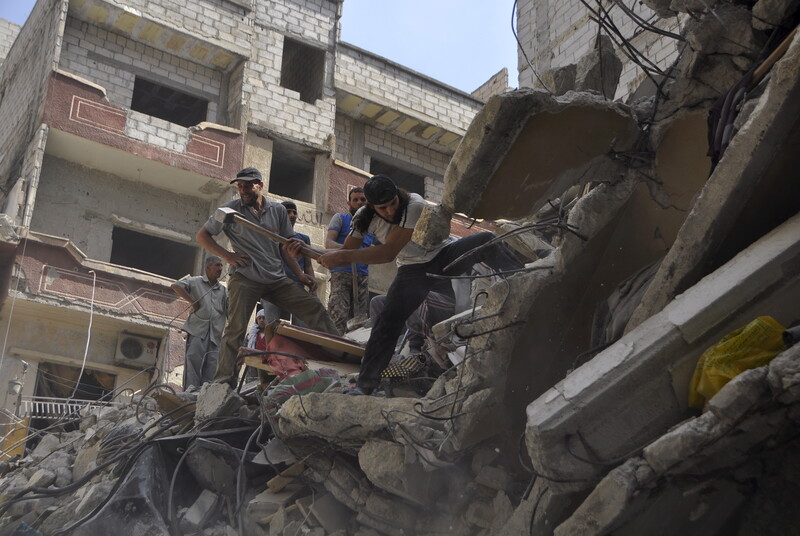
Men search for survivors amid the rubble at a site which activists said was hit by barrel bombs launched by forces loyal to Syrian President Bashar al-Assad, Yarmouk refugee camp, southern outskirts of Damascus, 26 May.
ReutersDuring the month of May, 55-year-old Saed al-Nadi from Jabaliya, in the northern occupied Gaza Strip, died of wounds sustained during Israel’s assault last summer. The cumulative Palestinian death toll from the 51 days of bombing and shelling in July-August 2014 exceeds 2,200, according to the United Nations monitoring group OCHA.
Israeli forces continued to open fire at Palestinian civilians in the “access restricted area” along Gaza’s coastal and land boundaries on a daily basis.
Palestinian fighters fired at least one rocket into Israel on 26 May; the following day Israel fired multiple missiles into Gaza. No injuries were reported on either side, according to OCHA.
Also in Gaza, 74 members of the Palestinian security forces were injured while attempting to diffuse unexploded ordnance west of Beit Lahiya. Three civilians were injured by unexploded ordnance in Gaza during May. Since the 26 August 2014 ceasefire, 11 Palestinians, including a child, were killed by unexploded ordnance and another 123, including 22 children, were injured.
The Rafah crossing — the sole exit and entry point for most of the 1.8 million Palestinians in Gaza — was opened between 26 and 28 May in only one direction, allowing 1,629 individuals to cross into Gaza from Egypt. Egypt has kept the crossing closed since an attack in the Sinai Peninsula in late October, opening it only on 15 days since then.
Jerusalem
In the occupied West Bank, Israeli forces shot and killed a Palestinian man in the al-Tur area of East Jerusalem after he ran into a group of Israeli Border Police, injuring two of them. Israeli authorities claimed it was a deliberate attack, but Palestinian eyewitnesses said it was an accident, according to OCHA.
A Palestinian boy was shot in the eye with a rubber-coated bullet next to Shufat checkpoint in East Jerusalem while returning from school; he is the third child injured in this location during clashes so far this year.
The Israeli authorities shut down a health center in the Shuafat neighborhood, claiming that it was affiliated with the Ramallah-based Palestinian Authority, which is forbidden by Israel from operating in East Jerusalem. The facility provided health services to 62 Palestinian schools in Jerusalem and also functioned as a youth center, OCHA states.
Hundreds of Palestinians from six small herding communities in the West Bank’s northern Jordan Valley were temporarily displaced during a large Israeli military training exercise. Nearly 100 such incidents have been recorded since the beginning of 2012, according to OCHA. “This practice generates a coercive environment that contributes to pressuring Palestinian residents to permanently leave the affected areas,” OCHA states.
More than 1,000 Palestinian-owned trees and saplings were set on fire and vandalized by Israeli settlers in the West Bank during May. The Israeli human rights group Yesh Din reported during the month that 85 percent of complaints of settler violence made since 2005 were closed by Israel without indictment.
Refugees
In a press conference ahead of the 65th anniversary of UNRWA, the UN agency for Palestine refugees, the agency’s commissioner general stated that not a single home destroyed in Gaza last summer has been rebuilt.
Pierre Krähenbühl added that 65 percent of registered Palestine refugees are under the age of 25.
Conditions for Palestinian refugees have badly deteriorated in recent years.
In Gaza, 860,000 Palestinians are dependent on UN food assistance as a result of Israel’s siege, in place since 2007, and the unemployment rate there is the highest in the world.
Before war broke out in Syria, the nearly half a million Palestinian refugees there only sought education services through UNRWA. Today, 95 percent of the community are almost entirely dependent on the agency to meet their basic needs.
“The situation in Yarmouk remains absolutely critical,” Krähenbühl warned, adding that because of ongoing armed conflict, the agency has not been able to deliver aid to the besieged camp since 28 March.
UNRWA warned last month that only 21 percent of the funds needed for this year’s Syria crisis appeal have been secured.
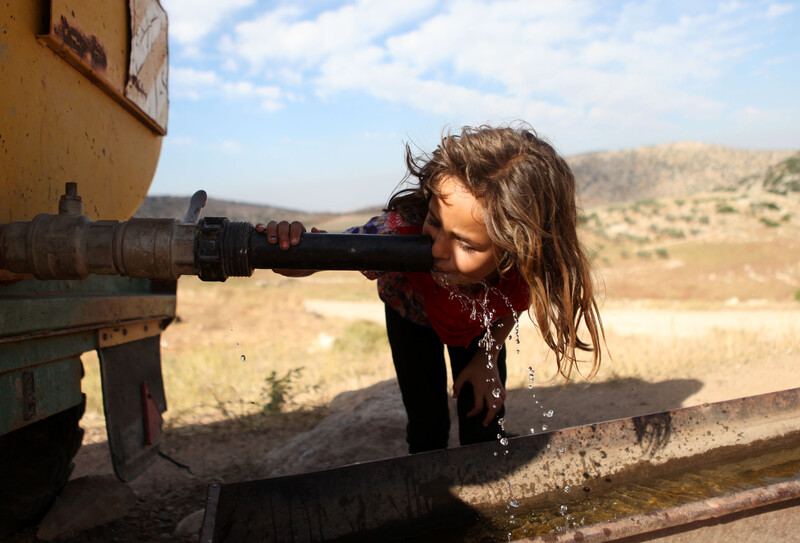
A Palestinian Bedouin girl drinks from a water tank outside her family’s tent near the West Bank town of Tubas in the Jordan Valley on 6 May. Besieged Palestinian communities in the Jordan Valley have called on the international community to immediately intervene to halt Israeli military exercises in the area.
APA images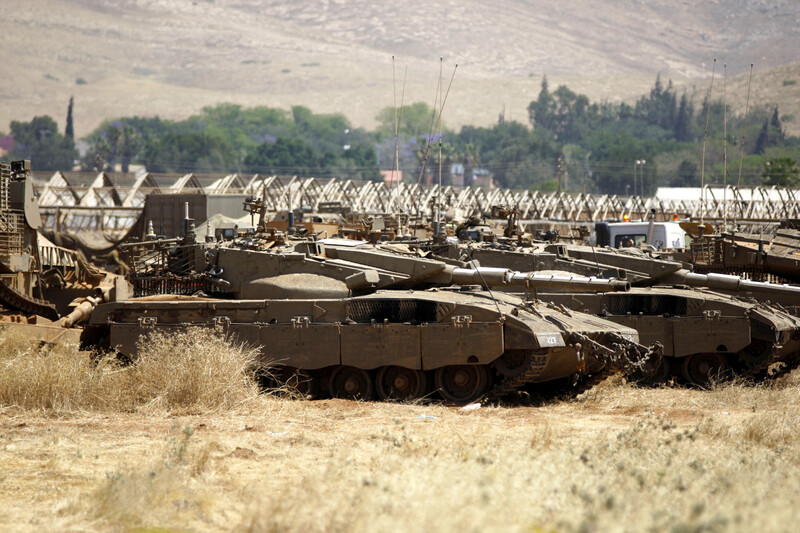
Israeli tanks stand on agricultural land during a military training exercise in the Jordan Valley on 6 May.
APA images
Palestinians from the West Bank village of al-Zaim call for the opening of a gate in the wall between Jerusalem and the village on 8 May. The gate had been closed by Israel for more than two weeks, severely restricting travel to and from the village.
ActiveStills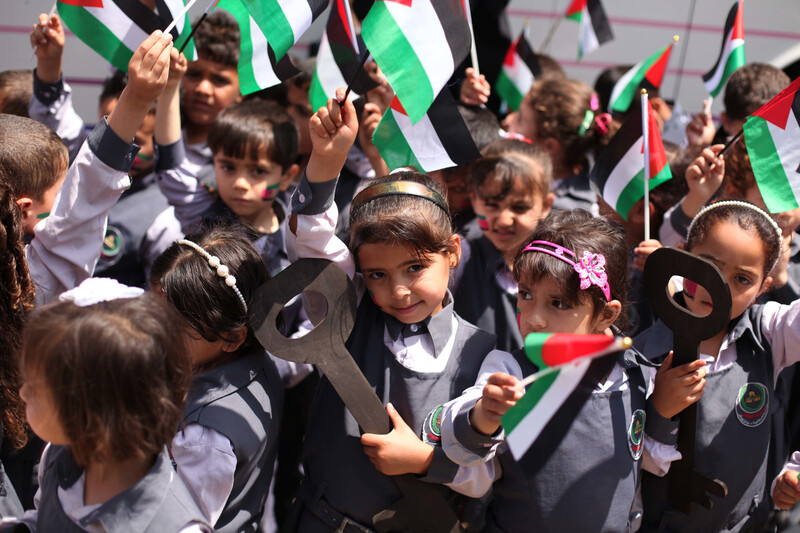
Palestinian children take part in a march ahead of commemorations of the 67th anniversary of the Nakba, the ethnic cleansing of Palestine by Zionist forces, in Gaza City on 13 May.
APA images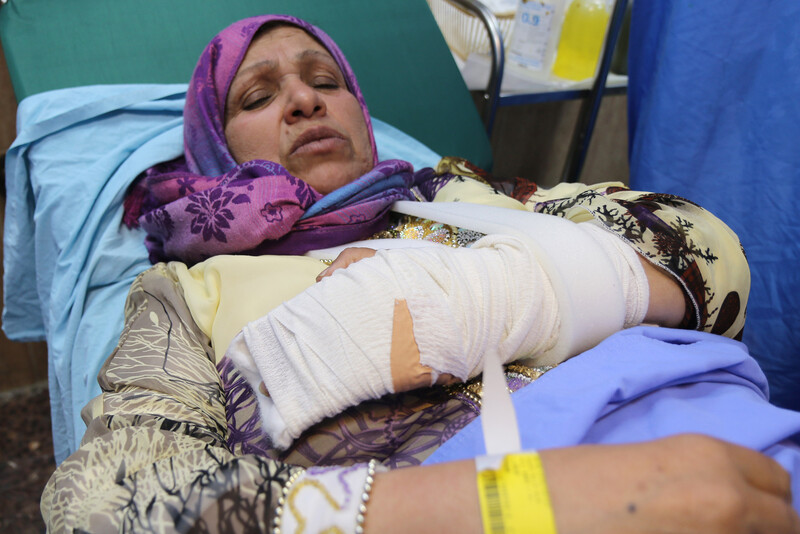
Yusra Qatesh, 60, rests in a hospital in the West Bank city of Nablus on 13 May after 24 hours of Israeli detention. Qatesh was detained by Israeli authorities at the Allenby crossing while she was traveling back from Jordan to West Bank before she was taken to a police station in Maale Adumim settlement. Qatesh’s hand was fractured after an Israeli soldier pushed her into a police car. She was hospitalized in Jerusalem by the police and then dropped off on a street near Maale Adumim.
ActiveStills
Palestinians carry a wounded protester during clashes with Israeli Border Police following a demonstration marking the 67th anniversary of the Nakba outside Ofer military prison near the West Bank city of Ramallah on 15 May.
APA images
A Palestinian artist paints a mural on the rubble of a building following a march to mark the 67th anniversary of the Nakba in the al-Tuffah neighborhood east of Gaza City on 16 May.
APA images
Palestinians march during a protest against Israel’s wall and to mark Nakba Day, the annual commemoration of the 1948 ethnic cleansing, in the West Bank village of Nilin on 15 May.
The Electronic Intifada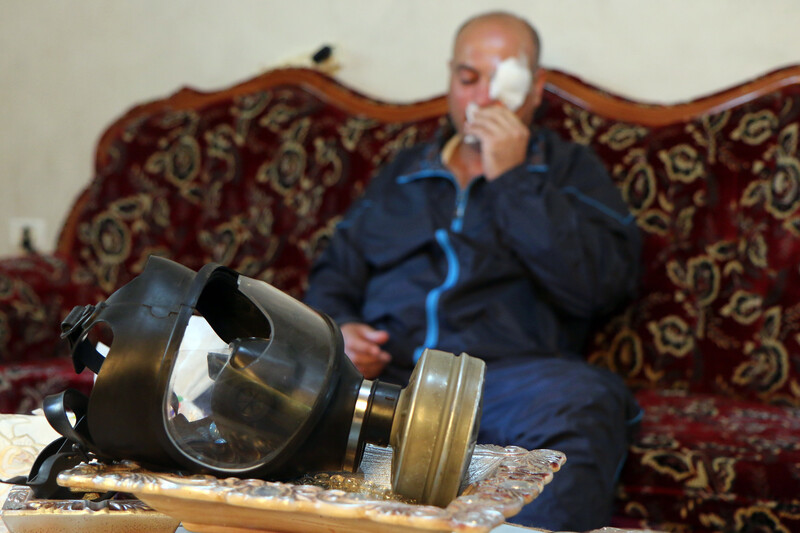
Nidal Eshtayeh, a photojournalist, is seen in his house in the village of Salem after he was wounded by a rubber-coated bullet shot directly towards his face by Israeli soldiers while he was covering a peaceful Nakba Day demonstration at Huwwara military checkpoint near Nablus, 16 May.
ActiveStills
Israeli youth rally outside the Old City of Jerusalem during the Jerusalem Day march organized by Israeli nationalists and which celebrates 48 years of Israeli occupation of East Jerusalem, 17 May.
ActiveStills
FIFA President Sepp Blatter speaks with Palestine Football Association President Jibril Rajoub during their visit to Jalazone refugee camp near the West Bank city of Ramallah on 20 May. Blatter visited in attempt to head off a Palestinian call for a vote to suspend Israel from football’s governing body over its systematic abuses of Palestinian players. Rajoub withdrew the motion shortly before it came to vote; FIFA’s scandal-ridden president resigned shortly after his re-election later that month.
APA images
Destroyed homes in the Shujaiya district of Gaza City on 20 May. At least 100,000 Palestinians are still living without adequate shelter more than nine months after the end of Israel’s attack on the Gaza Strip last summer.
APA images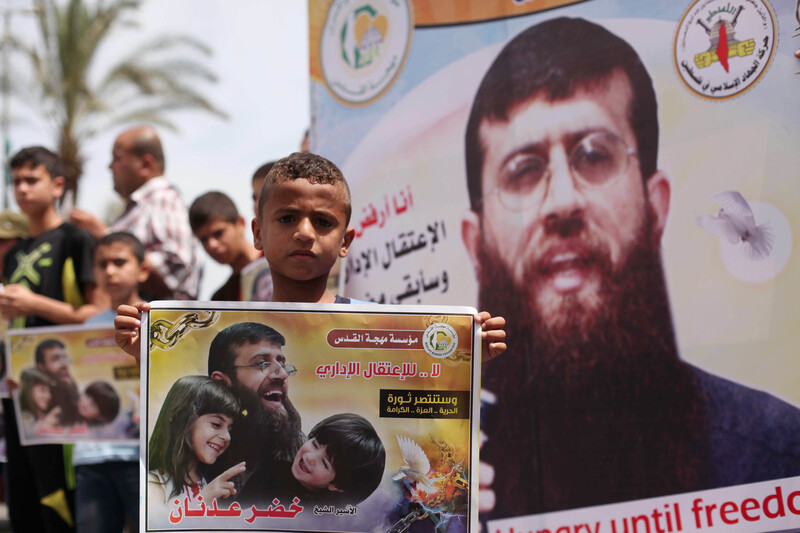
Palestinians in Gaza City hold posters of Khader Adnan, the prisoner movement leader on open-ended hunger strike to protest his detention by Israel without charge or trial, 24 May.
APA images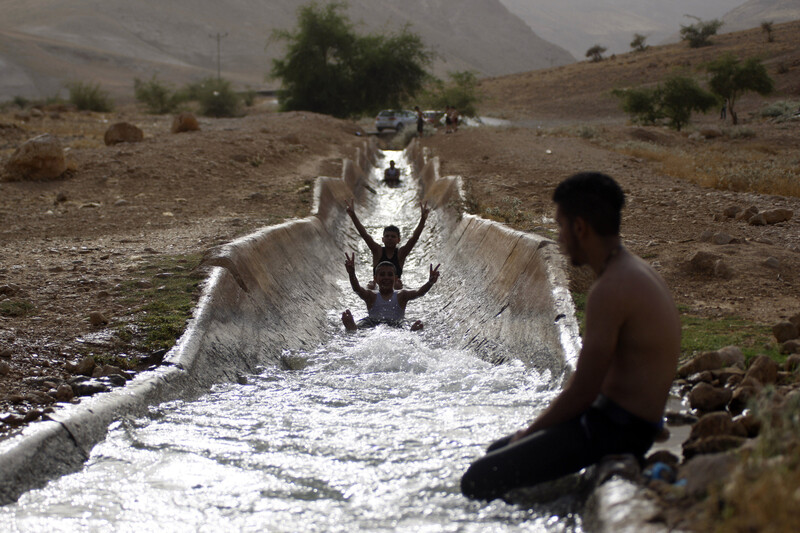
Palestinian youths slide down a water canal used for irrigation as temperatures soared in the West Bank city of Jericho on 27 May.
APA images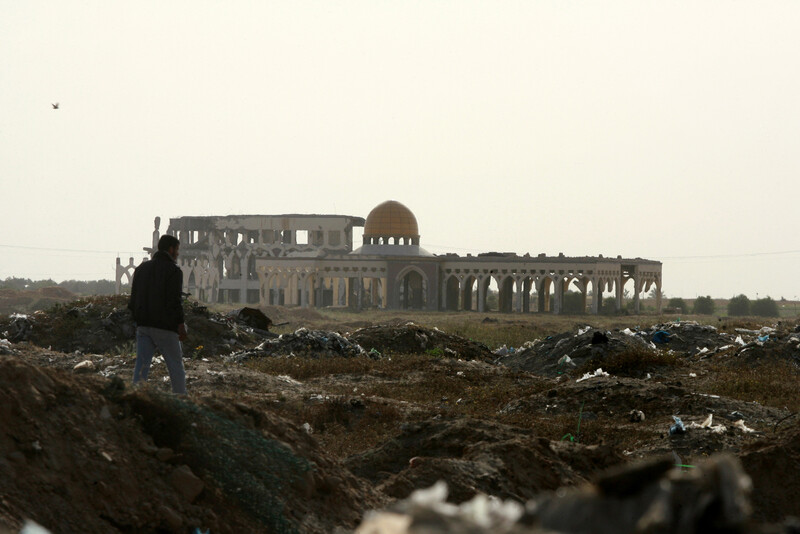
A Palestinian man looks at a crater where an Israeli missile landed near Rafah in the southern Gaza Strip on 27 May.
APA images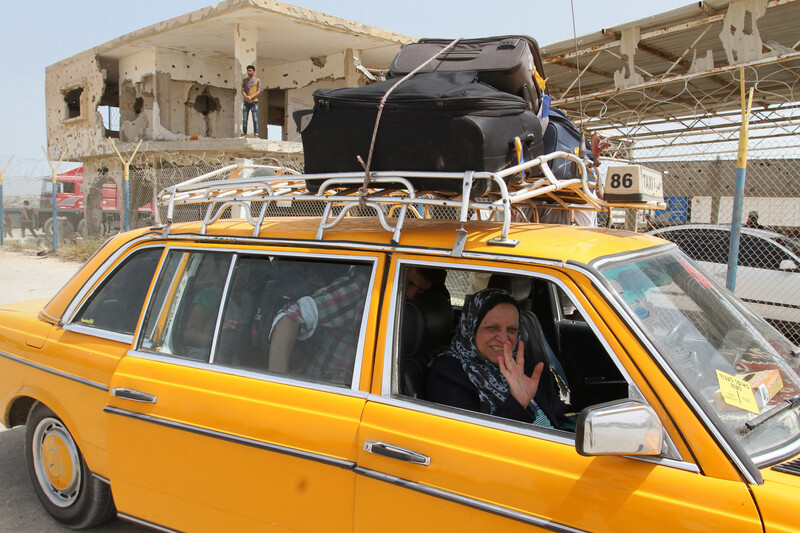
A Palestinian woman waves upon her return to Gaza via the Rafah crossing between Egypt and southern Gaza on 27 May. Egyptian authorities opened the crossing for the first time in nearly 80 days to allow stranded Palestinians to return to Gaza. But Palestinians waiting to leave Gaza, including patients seeking medical treatment, were not able to travel to Egypt.
APA images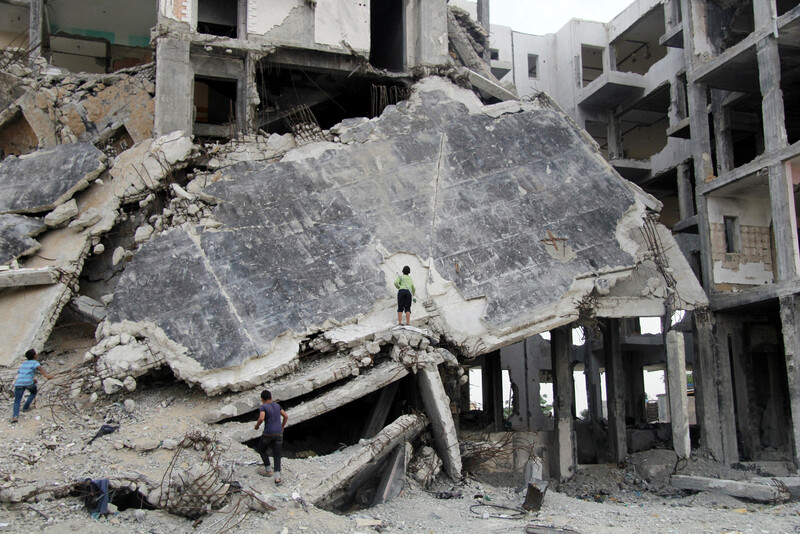
Palestinian children play on the rubble of their family’s home which was destroyed by Israeli forces last summer, Beit Lahiya, northern Gaza Stip, 28 May.
APA images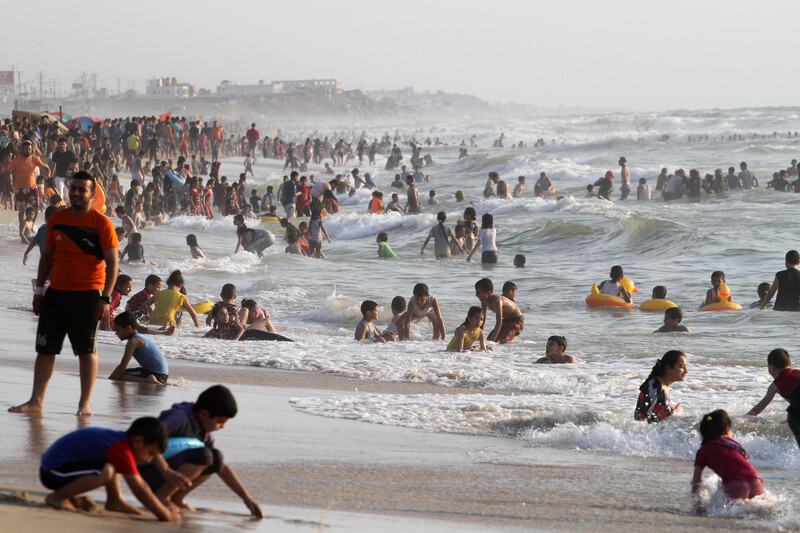
Palestinians enjoy a day at the beach in Gaza City on 29 May.
APA images
A Palestinian protester throws stones at Israeli forces during clashes following a demonstration against the expropriation of Palestinian land in the West Bank village of Kufr Qaddum, near Nablus, on 29 May.
APA images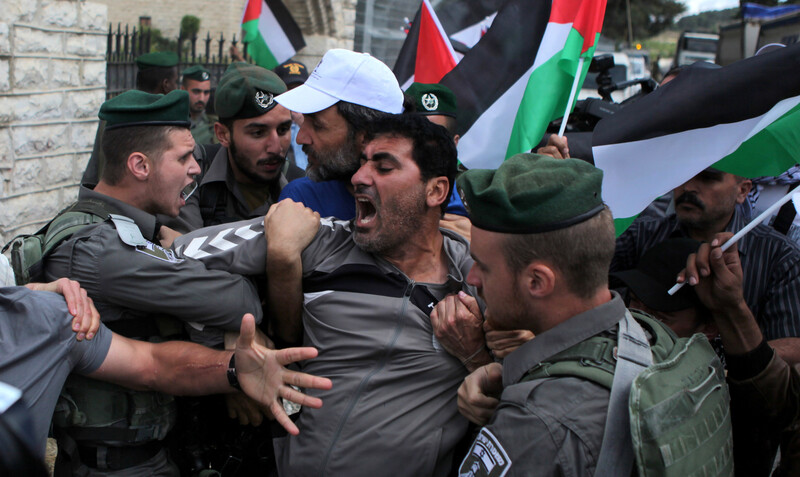
Israeli forces try to detain a Palestinian protester during a demonstration outside a large church compound near al-Aroub Palestinian refugee camp, just north the West Bank city of Hebron, on 30 May. Palestinians were protesting the sale of the building to Israeli settlers via front groups.
APA images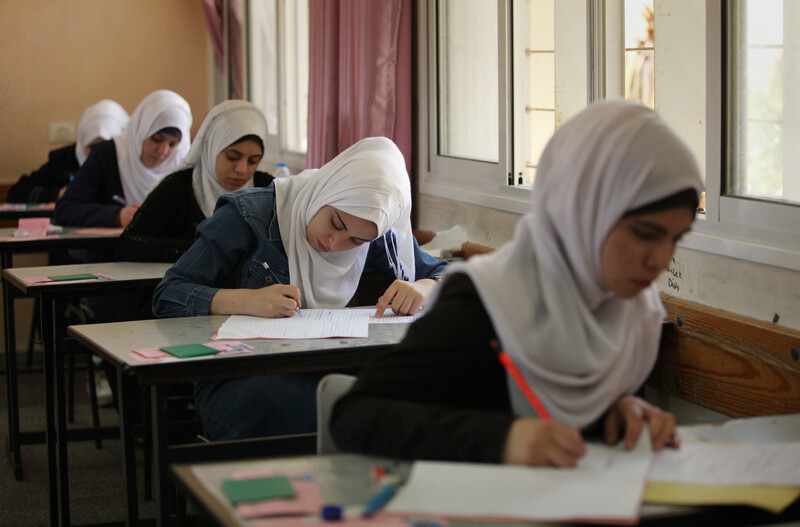
Palestinian students sit for their final high school tawjihi exams in Gaza City on 30 May. Nearly 81,000 Palestinian students sat for the first session of their high school exams across the West Bank and the Gaza Strip.
APA images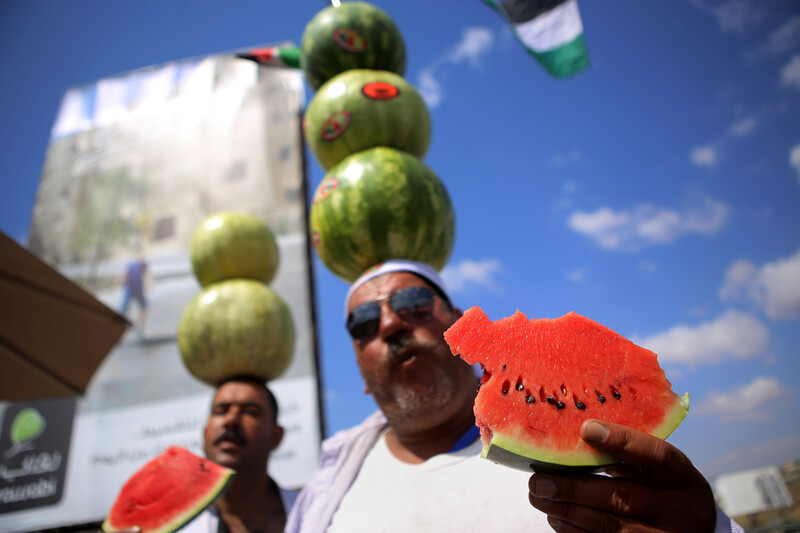
Palestinian fruit vendor Abu Haloom from Balata refugee camp balances watermelons on his head to attract customers along a road between Nablus and Ramallah in the West Bank, 30 May.
APA images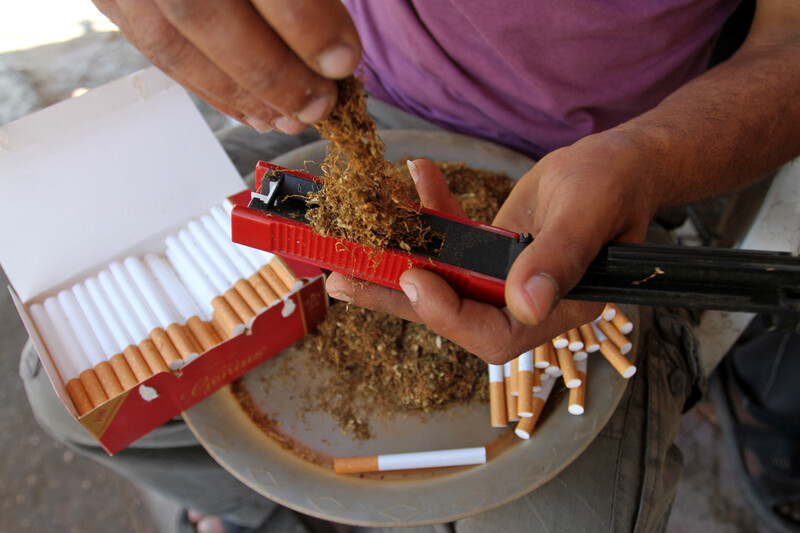
A Palestinian street vendor sells cigarettes rolled with local tobacco in the southern Gaza Strip city of Rafah on 31 May. The Gaza government increased taxes on cigarettes smuggled from Egypt and Israel to alleviate the financial crisis.
APA images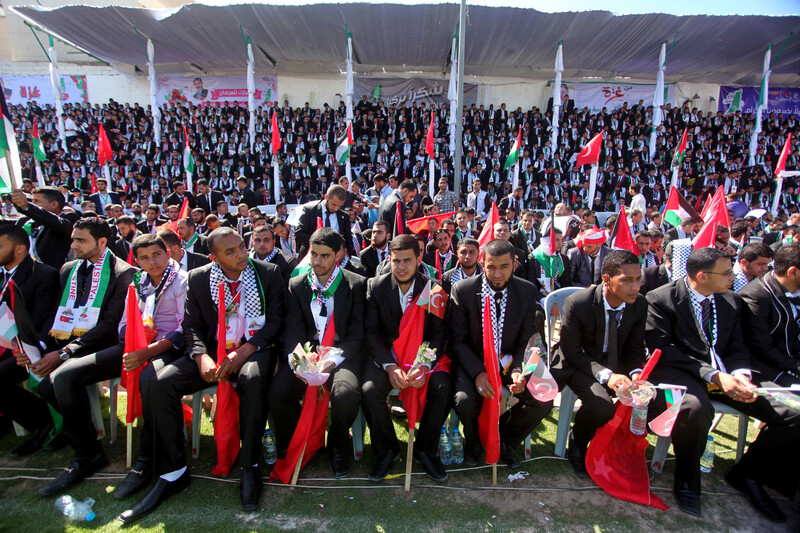
Palestinian grooms take part in a mass wedding in Gaza City on 31 May. Nearly 2,000 Palestinian couples were married in a ceremony funded by the Turkish government and supported by the Hamas movement.
APA images

